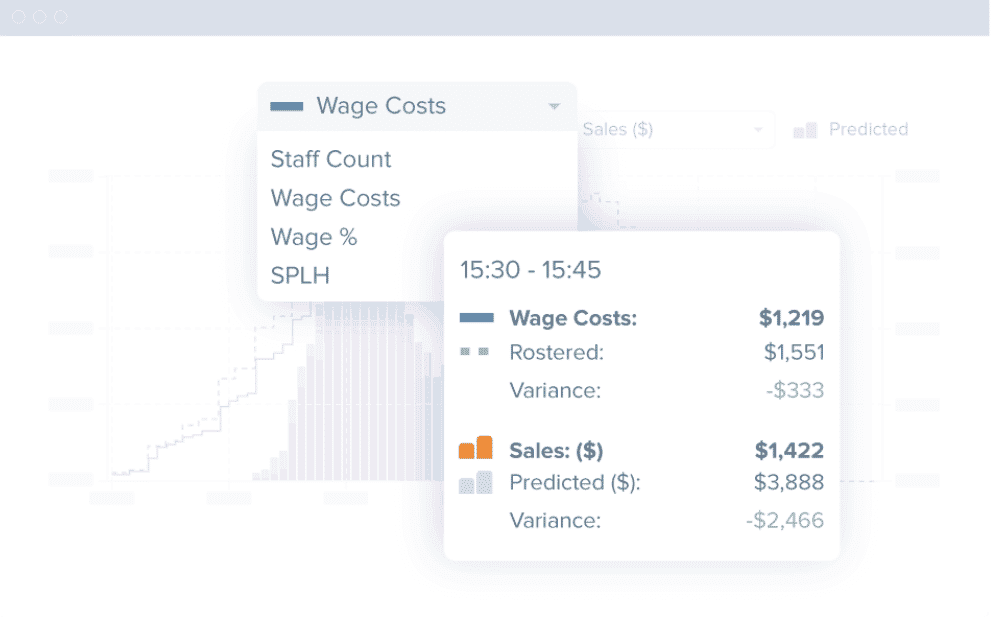Managing your wage costs from a financial report is a bit like trying to come up with a game plan after the full-time whistle has already blown. Only a fraction of Australian employers ever master their wage costs. Those who do are able to turn what’s viewed as a burden by their competitors into their best competitive advantage.
A well trained and engaged Australian workforce is a terrifyingly sharp weapon to take to your competition.
The secret to it all is actually highly practical in application. It has been proven through decades of research that links highly engaged workforces to increases in topline revenue.
We’ve worked with some of the most successful Australian companies in traditionally low margin industries. Here are three of the most potent strategies you can apply to turn your workforce into your weapon in the new financial year.
1. Start measuring the future, rather than just reporting on the past
Financial reports are good if you want to see what happened yesterday. But taking control of wage costs is a long-term game. This means managing all expenses that a company bears for the employment of a staff member. This includes everything from gross salaries and benefits to other legal employer contributions.
If you want to improve your future wage cost position, you need to start in advance.
Building a conceptual report of your future wage costs works well because changes to the way you manage your workforce can take a long time to flow through. That’s especially true when it comes to agreed rostered hours, employment types, and hiring strategies, which take time to materialise into long term savings.
You know what Christmas trade was like last year, so what will it look like in the new financial year with higher wage costs and new employees? What could you change throughout the year in terms of things like the types of employees you hire and their agreed hours? The difference can be significant.
Scenario test your forecasts based on employment type, age, level and test the impact of unforeseen overtime. Software will greatly speed this process up. If you’re only reporting on how well you’ve done, start reporting into the future in 2019. Plan to be successful in the future so you can start moving towards your goals now.
2. Tie up loose ends with a sharp ‘day of operations’ plan
A well-run shift feels good, it’s like a hot knife through butter. The perfect win-win-win for the Australian business, employee, and customer.
For some businesses, this is a random occurrence, but businesses that invest in the success of their workforce replicate this effect on a daily basis. It sounds simple enough: you need the right people in the right place at the right times, and management that leads the charge from the front.
The reality is that planning and execution have many moving parts, which is why the day of operations plan holds key to your long term success.
Staff levels should track your schedule, or day of operations plan, like clockwork. Any observed discrepancies should be viewed in light of demand being increased or decreased versus what was expected.
At Tanda we’ve quantified the ‘loose ends’ of a shift to be worth at least 1% of total payroll cost, based on clients who moved off manual timesheets. These represent just the small 1 to 5 minute variances here or there to what was planned, so with larger unexpected variances there can be a much larger than 1% difference between your plan and actual costs.
Executing shifts with precision and recording times accurate to the minute is low hanging fruit in 2019. You can do this by setting goals for the time between trading or production end, and the official shift end, to encourage staff to finish diligently. If the original plan results in success, sticking to the plan guarantees it.
![]()
3. Return Managers to the Frontline
If you want to sell more, make more, and ultimately do more in 2019, empower your managers to lead from the front. This is an opportunity that most businesses leave on the table.
Frontline managers are your managers who lead shifts and teams, and they lead more employees than any other level of management. Remember, frontline staff have direct and measurable impacts on top-line revenue and quality — they are the doers of any company.
Research shows that the most valuable thing a frontline manager can do is allocate time to lead from the front, yet frontline managers spend more time on administration than on more important things like coaching and training.
Make the admin the exception. Analyse what keeps managers in their office and automate it, so they can lead the charge from the front. Industrial engineers use the fancy term “task-based observation”, but in practice finding out what to automate is as simple as analysing each piece of paper a manager touches and asking, “why?”

Master your Wage Costs
Mastering your wage costs only takes a few key changes to the way you do business. First, investing in the right software will empower you to accurately forecast the next 12 months and beyond based on both reported data and common scenarios. Workforce success platforms like Tanda eliminate the need to guess how different employment and overtime levels affect revenue.
Second, planning ahead and having contingencies ensure that every shift runs well and no resources are wasted. Besides having a sharp “day of operations plan”, preparing for staffing difficulties is possible with features like shift swapping that dramatically reduce no-shows.
Third, ensuring that managers have a connection with both the staff and the customers gives you an edge over the competition. A manager that is not stuck in the back office understands concerns from all ends, and makes better decisions as a result. Help your business grow by implementing these three strategies today!






